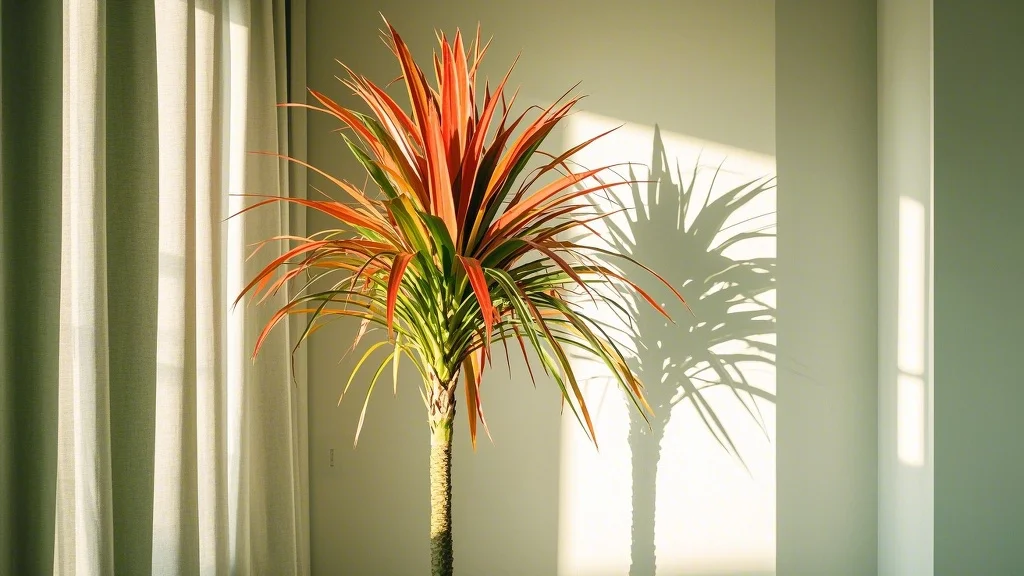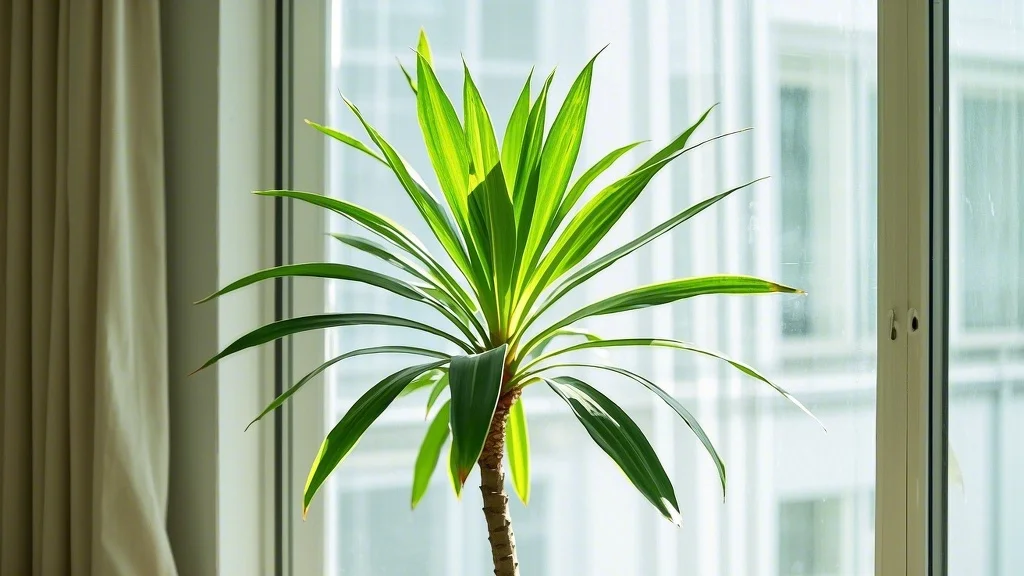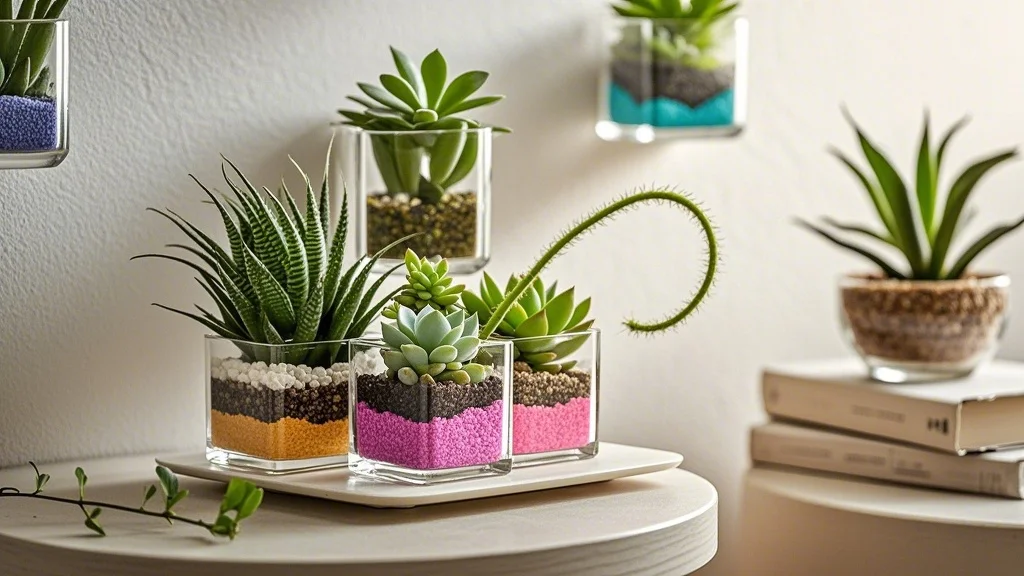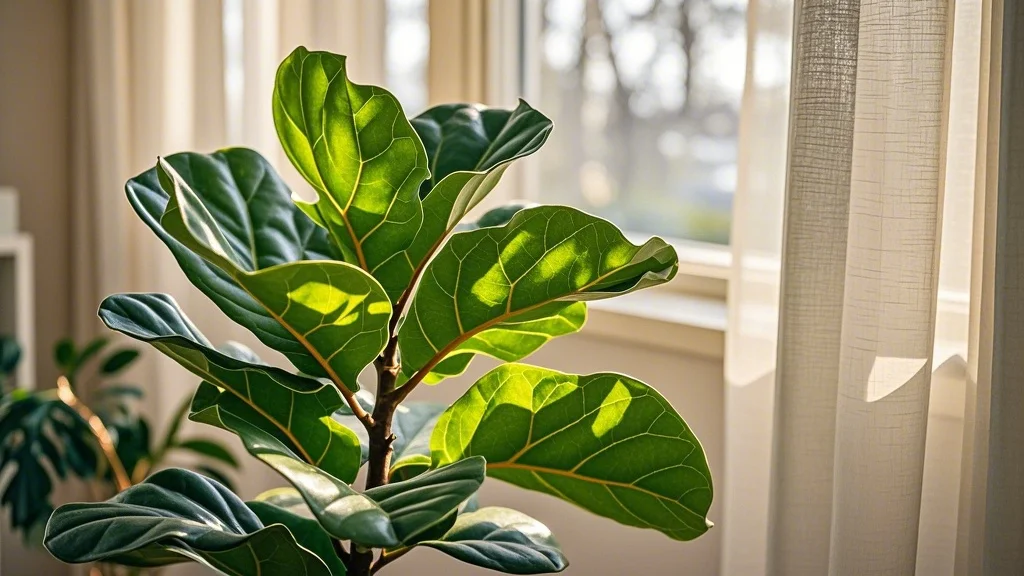Dracaena plants have rightfully earned their place as some of the most popular houseplants for urban dwellers. With their architectural form, striking foliage, and remarkable ability to thrive in less-than-ideal conditions, these plants bring a touch of tropical elegance to any apartment or indoor space. Whether you’re drawn to the slender, arching leaves of Dracaena marginata (Dragon Tree), the broad, corn-like foliage of Dracaena fragrans (Corn Plant), or any of the other stunning varieties, this comprehensive guide will help you provide optimal care for your dracaena.
As intermediate plant owners looking to expand your indoor jungle, you’ll appreciate that dracaenas offer impressive visual impact while being surprisingly forgiving of occasional neglect—perfect for busy urban lifestyles. Let’s dive into everything you need to know about these remarkable houseplants.
Contents [hide]
- 1 Dracaena Varieties: Getting to Know the Family
- 2 Light Requirements: Finding the Sweet Spot
- 3 Watering: The Art of Moderation
- 4 Soil and Potting: Creating the Right Foundation
- 5 Humidity and Temperature: Creating a Comfortable Environment
- 6 Fertilizing: Providing Balanced Nutrition
- 7 Pruning and Maintenance: Shaping Your Dracaena
- 8 Common Problems and Solutions
- 9 Advanced Care Tips for Thriving Dracaenas
- 10 Dracaenas as Air Purifiers
- 11 Conclusion: The Rewarding World of Dracaenas
Dracaena Varieties: Getting to Know the Family

The Dracaena genus includes approximately 120 species, with several popular varieties commonly found in homes and offices:
Dracaena marginata (Dragon Tree)
Characterized by thin, arching leaves with red edges growing from a slender trunk, the Dragon Tree is perhaps the most recognizable dracaena. It can reach impressive heights indoors (up to 6 feet) while maintaining a relatively small footprint, making it perfect for apartment corners.
Dracaena fragrans (Corn Plant)
With broad, glossy leaves resembling corn stalks, this variety brings a lush, tropical feel to indoor spaces. The ‘Massangeana’ cultivar, with its yellow-striped leaves, is particularly popular.
Dracaena deremensis
This variety includes popular cultivars like ‘Warneckii’ (with white-striped leaves) and ‘Lemon Lime’ (featuring bright yellow-green foliage). They tend to be more compact than other dracaenas.
Dracaena reflexa (Song of India)
Recognizable by its yellow-edged, pointed leaves that grow in rosettes, this variety adds a bright pop of variegation to any plant collection.
Dracaena sanderiana (Lucky Bamboo)
Though often marketed as bamboo, this plant is actually a dracaena that can grow in water or soil. Its stalks can be trained into decorative shapes.
Light Requirements: Finding the Sweet Spot

Dracaenas are prized for their adaptability to various light conditions, but understanding their preferences will help your plant thrive rather than merely survive.
Ideal Light Conditions
Most dracaena varieties prefer bright, indirect light. This means placing them near east or west-facing windows where they’ll receive gentle morning or late afternoon sun. A few feet back from a south-facing window (with some filtering of the intense midday rays) can also work well.
Variegated Varieties Need More Light
If your dracaena has variegated leaves (like ‘Warneckii’ or ‘Song of India’), it will need brighter light than solid green varieties. Without adequate light, these plants may lose their distinctive striping as they produce more chlorophyll to compensate.
Low Light Tolerance
While dracaenas can tolerate lower light conditions better than many houseplants, they will grow more slowly and may become leggy over time. The solid green varieties like Dracaena fragrans can handle dimmer conditions better than their variegated cousins.
Signs of Improper Lighting
- Too much light: Bleached or scorched leaves, particularly on variegated varieties
- Too little light: Slow growth, smaller new leaves, loss of variegation, and stretching toward light sources
Watering: The Art of Moderation
Proper watering is crucial for dracaena health, and these plants prefer to dry out between waterings rather than sit in constantly moist soil.
Watering Frequency
Allow the top 1-2 inches of soil to dry out completely before watering again. For most indoor environments, this translates to watering every 1-2 weeks, though you should always check the soil rather than following a strict schedule.
Seasonal Adjustments
- Spring/Summer: Increase watering frequency as the plant actively grows
- Fall/Winter: Reduce watering as growth slows and evaporation decreases
Water Quality Matters
Dracaenas are sensitive to fluoride and chlorine commonly found in tap water. These chemicals can cause brown leaf tips and margins. Consider using:
- Filtered water
- Rainwater
- Distilled water
- Tap water that has sat out overnight (to allow chlorine to dissipate)
Signs of Watering Issues
- Overwatering: Yellowing leaves (especially lower leaves), soft stems, soggy soil, root rot
- Underwatering: Crispy brown leaf tips and edges, curling leaves, dry soil pulling away from the pot edges
Soil and Potting: Creating the Right Foundation
The right soil mix provides both adequate drainage and nutrition for your dracaena.
Ideal Soil Composition
Dracaenas thrive in well-draining soil that retains some moisture without becoming waterlogged. A good mix includes:
- 2 parts standard potting soil
- 1 part perlite or pumice
- 1 part coco coir or fine bark
Alternatively, a high-quality houseplant potting mix with added perlite works well.
Container Considerations
- Always choose pots with drainage holes
- Terra cotta pots work well as they allow soil to dry more quickly
- Select a container 1-2 inches larger than the current root ball when repotting
Repotting Schedule
Dracaenas are relatively slow-growing and don’t mind being slightly root-bound. Repot every 2-3 years or when:
- Roots are circling the bottom of the pot or emerging from drainage holes
- Growth has slowed significantly
- The plant becomes top-heavy and unstable
Humidity and Temperature: Creating a Comfortable Environment
As tropical plants, dracaenas appreciate consistent temperatures and moderate humidity levels.
Temperature Range
- Ideal: 65-80°F (18-27°C)
- Minimum: 55°F (13°C) – Most varieties will suffer below this temperature
- Avoid: Cold drafts, sudden temperature changes, and heating/AC vents
Humidity Preferences
While dracaenas can adapt to average indoor humidity levels (around 40-50%), they appreciate higher humidity of 60% or more. In dry apartments or during winter heating season, consider:
- Grouping plants together to create a microclimate
- Using a pebble tray with water beneath the pot (ensuring the pot doesn’t sit in water)
- Running a humidifier nearby
- Placing in naturally humid areas like bathrooms (if adequate light is available)
Signs of Environmental Stress
- Too cold: Slow growth, drooping leaves
- Too dry: Brown leaf tips and edges, curling leaves
Fertilizing: Providing Balanced Nutrition
Dracaenas aren’t heavy feeders but benefit from regular, light fertilization during their growing season.
Fertilizer Type
Use a balanced, water-soluble houseplant fertilizer with an NPK ratio around 10-10-10 or 20-20-20, diluted to half the recommended strength.
Fertilizing Schedule
- Growing season (spring through summer): Feed once every 4-6 weeks
- Dormant period (fall and winter): Reduce or eliminate fertilizing
Application Tips
- Always apply fertilizer to moist soil to prevent root burn
- Flush the soil thoroughly every few months to prevent salt buildup
- If your plant has been recently repotted in fresh soil, wait 2-3 months before fertilizing
Pruning and Maintenance: Shaping Your Dracaena
Pruning helps maintain the desired shape and encourages fuller growth in dracaenas.
When to Prune
The best time to prune is during the active growing season (spring and summer) when the plant can recover quickly.
How to Prune
- Use clean, sharp scissors or pruning shears
- For tall, leggy plants, cut the main stem at the desired height
- Remove any dead, yellowing, or damaged leaves at their base
- For Dragon Trees (D. marginata), cutting the main stem will encourage branching
Propagation from Prunings
Don’t waste those cuttings! Dracaenas are easy to propagate:
- Take stem cuttings 4-6 inches long
- Remove lower leaves, leaving a few at the top
- Allow the cut end to callus for 24 hours
- Place in water or moist soil
- Roots typically develop within 3-4 weeks in water or 6-8 weeks in soil
Regular Maintenance
- Dust leaves regularly with a damp cloth to keep them looking fresh and allow better light absorption
- Rotate the plant quarterly to ensure even growth
- Check occasionally for pests, especially under leaves and along stems
Common Problems and Solutions
Even with the best care, dracaenas can encounter issues. Here’s how to identify and address the most common problems:
Brown Leaf Tips and Edges
Causes:
- Low humidity
- Fluoride/chlorine in water
- Salt buildup from fertilizer
- Underwatering
Solutions:
- Increase humidity
- Use filtered or distilled water
- Flush soil thoroughly to remove salt buildup
- Adjust watering routine
Yellowing Leaves
Causes:
- Overwatering (most common)
- Nutrient deficiencies
- Natural aging of lower leaves
- Sudden temperature changes
Solutions:
- Allow soil to dry more between waterings
- Check for root rot and repot if necessary
- Ensure proper fertilization
- Maintain consistent temperatures
Drooping or Wilting Leaves
Causes:
- Underwatering
- Overwatering (causing root issues)
- Temperature stress
- Transplant shock
Solutions:
- Check soil moisture and adjust watering
- Ensure proper drainage
- Move away from drafts or temperature extremes
- Give recently repotted plants time to adjust
Pest Problems
Dracaenas can occasionally attract pests, particularly:
Spider Mites:
- Tiny specks on leaves with fine webbing
- Leaves develop stippling and may turn yellow
- Treat with insecticidal soap or neem oil, increasing humidity
Mealybugs:
- White, cottony masses in leaf axils and undersides
- Remove with alcohol-dipped cotton swabs and treat with insecticidal soap
Scale:
- Small, brown bumps that don’t move, usually on stems
- Scrape off gently and treat with horticultural oil
Advanced Care Tips for Thriving Dracaenas
Once you’ve mastered the basics, these advanced techniques can help your dracaenas reach their full potential:
Encouraging Branching
If your dracaena has become too tall or leggy, strategic pruning can create a fuller, bushier plant:
- Cut the main stem at the desired height
- The plant will typically produce 2-3 new growth points below the cut
- Save the top cutting for propagation
- For multiple branches, apply this technique to each new stem as it grows
Managing Growth in Limited Spaces
For apartment dwellers with height limitations:
- Choose naturally compact varieties like D. deremensis ‘Compacta’
- Prune taller varieties regularly to maintain desired height
- Consider root pruning during repotting to limit size without changing pots
Seasonal Care Adjustments
- Spring: Increase light exposure gradually, resume regular fertilizing, check for new growth
- Summer: Protect from intense direct sun, monitor for increased water needs
- Fall: Reduce fertilizing, prepare for lower light conditions
- Winter: Minimize water, keep away from cold drafts and heat sources, suspend fertilizing
Dracaenas as Air Purifiers
NASA’s Clean Air Study identified several dracaena varieties as effective at removing indoor air pollutants:
- Dracaena marginata (Dragon Tree) removes xylene, trichloroethylene, and formaldehyde
- Dracaena fragrans (Corn Plant) filters benzene, formaldehyde, and trichloroethylene
- Dracaena deremensis varieties help remove formaldehyde
While no plant can completely purify indoor air, a collection of dracaenas can contribute to healthier air quality in urban apartments where ventilation may be limited.
Conclusion: The Rewarding World of Dracaenas
With their striking architectural forms, air-purifying qualities, and adaptability to indoor conditions, dracaenas deserve their status as favorite houseplants for urban dwellers. Their relatively low maintenance requirements make them perfect for busy apartment living, while their diverse varieties offer something for every aesthetic preference.
By providing the right balance of light, water, and care, you’ll be rewarded with healthy, long-lived plants that can become dramatic focal points in your home. Whether you’re drawn to the sculptural Dragon Tree, the lush Corn Plant, or any of the other beautiful varieties, dracaenas offer a perfect blend of visual impact and forgiving nature that makes them ideal companions for intermediate plant enthusiasts.
Remember that slight adjustments to care based on your specific environment and the particular dracaena variety you’re growing will yield the best results. With time and attention, your dracaena can thrive for many years, potentially growing from a modest tabletop plant into a stunning floor specimen that transforms your living space.
Happy growing!








